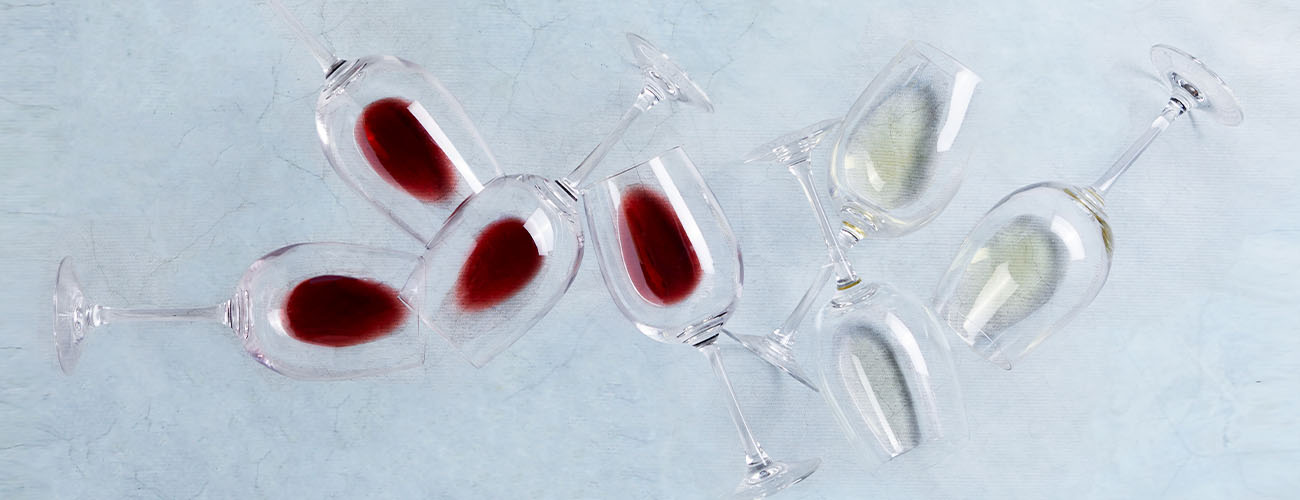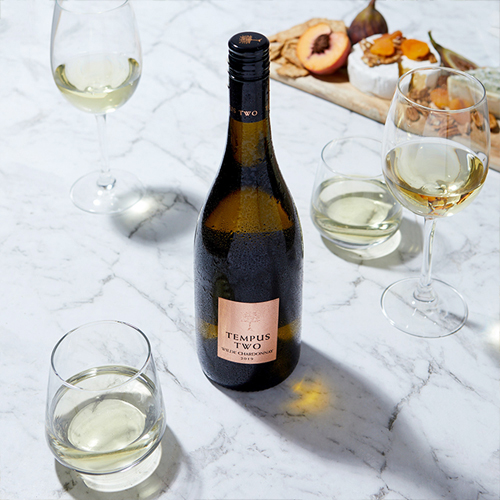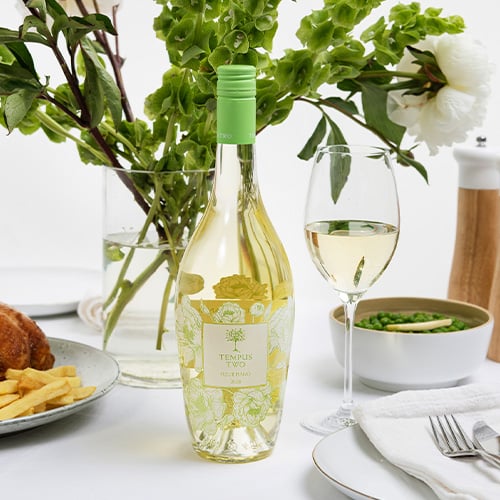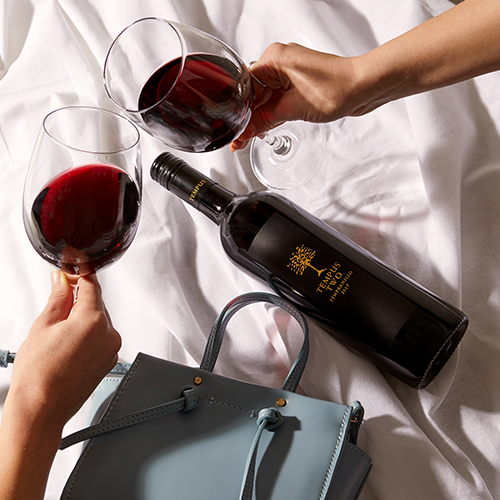



If you’ve ever seen The Office, you might recall Michael Scott’s exclamation that he knows a fair amount about fine food and drink. He swirls his glass of elegant white wine, takes a sip, and states, “Um.. this is a white”. This scene (while hilarious) actually reveals something about ‘wine talk’: it can be challenging to understand all the jargon and takes a lot of knowledge to sound sophisticated. Our ultimate guide to wine varietals helps break down this confusing jargon and make wine fun again. Afterall, wine is meant to be enjoyed!
So, where do you start? The best place to start is identifying the wines you like and why. You might know that you enjoy a glass of red but aren’t sure which is which or how they’re different; this is where wine varietals come in. Understanding the key characteristics of wine varietals helps explain the unique and wonderful qualities of different wines, as well as which foods they taste best with and typical flavours you might be able to expect.
With this short guide, you’ll be able to identify your favourite wines, learn about Australia’s most popular choice, and even sound less like Michael at your next dinner party - all thanks to wine varietals.
Wine can be described as either ‘varietal’ or ‘blended’. If you’re relatively new to wine, you might find the unique and extensive options overwhelming, and the many different terms and fancy naming conventions can make it a little difficult to know what to expect from your future sip. So what does it all mean?
A blended wine, made from a mixture of grape varieties, is made with no specific grape dominating the wine. It’s fundamentally ‘blended’ using different grape varieties to produce desired flavours, colours, aromas and textures.
On the other hand, wine varietals are wines made from at least 85% of one grape variety, with the name of that grape appearing on the label. Simply put, wine varietals refer to the type of grape (or dominant grape) used in making the wine.
When a wine label mentions a wine varietal (such as Semillon), it’s saying, “this bottle is made from Semillon grapes”, which helps establish and reveal the flavours and aromas you might be able to expect from the wine (alongside other factors, such as year harvested). Frequently, labels also display information about specific locations or regions to communicate that the type of grape (or wine varietal) used was grown in that particular region.
For instance, the 2024 Tempus Two Pewter Semillonlabel demonstrates that the wine grape varietal used in making this elegant and zesty wine is Semillon from the Hunter Valley region.
Wine varietals: red wine
The enchanting, romantic red wine is a consistent, favourite type of wine amongst newcomers and connoisseurs alike. Wine varietals for red wine include the full-bodied Shiraz; the lighter, elegant Pinot Noir; and the increasingly popular Tempranillo, Cabernet Sauvignon, and Merlot.
Wine varietals for red wine are made using dark-skinned grapes; this provides red wine’s characteristic red colour, which can range in hue from deep, opaque purple to ruby-red and everything in between.
A second characteristic common to red wine grape varietals involves ‘tannin’. What’s that, you ask? Tannins are polyphenols that give a wine its texture, structure and age-ability, and contribute to the drying sensation in the mouth (also known as astringency). Red wines are made by ‘macerating’ the juice of dark-skinned grapes alongside their skins, seeds and occasionally stems in a process called ‘whole-bunch fermentation’. This process, and each unique element of the grape bunch, provides colour and tannins to the wine.

Wine varietals: white wine
The elegant, gilded white wine is an ever-growing, popular choice of drink commonly selected for celebrations and by drinkers preferring a sweeter, smoother selection. Favourite wine varietals for white wine include the full-bodied Chardonnay, versatile Semillon, aromatic Sauvignon Blanc, the lighter Riesling and sweet Moscato.
Unlike red wine varietals, white wine is made using light-skinned grapes, with the skins themselves removed before fermentation. Most white wines are best served chilled and enjoyed when released from the winery; however, some - like Semillon - can be aged to increase the intensity and flavour of the wine.
Wine varietals: rose wine
Crisp, photogenic and stylistically diverse - it’s easy to see how rosé wine varietals have increasingly flourished in popularity over the years. Rosé wines - much like red - are made by macerating the juice of dark-skinned grapes with their skins; however, their skins are removed much faster! This process, and how long the juice touches the skins, results in rose varieties ranging in colour from pale pink to raspberry red. The extreme versatility of rose wines extends not just to colour but also taste; styles can be crisp and dry, to sweet and fruity and everything in between.
 Chardonnay
ChardonnayChardonnay is the world’s most popular white wine and typically embodies a delicate balance between fruit, acidity and texture to produce wine grape varietals with flavours ranging from clean and crisp to rich and complex. Unlike most white wines, Chardonnay wines are commonly aged in oak barrels to create an oaky, buttery quality unseen in other white wine varietals. Typical tasting notes include tropical, fruity flavours and creamy, oaky flavours like vanilla and butterscotch. Chardonnay is best served chilled during decadent dinner parties, celebrations, and date nights with creamy sauces and seafood.
Food pairing: Enjoy with roast chicken, creamy pasta dishes and seafood, or as an aperitif with fresh and aged cheeses.
Typical tasting notes: Fruits (i.e. pear, apple, fig, peach, and melon), honey, spice, oak, vanilla and butterscotch
Body: Medium to heavy
Alternatives: Sauvignon Blanc
Give it a try with...

Semillon grapes are a thin-skinned, early ripening variety with complex fruit, zesty lemon and honey notes. Semillon wine varietals age exceptionally well, increasing with intensity and complexity over time. As a young wine, flavours are often vibrant, crisp, and zesty, transforming to a buttery wine similar to an oaked Chardonnay when aged. Semillon is best served during long lunches and dinner parties with seafood, spicy food and cheeses.
Food pairing: Versatile and delicious alongside a variety of dishes, but particularly enjoyable with fresh seafood.
Typical tasting notes: Fruity fig, pear and peach with honey, citrus and smoke undertones
Body: Light to medium-bodied
Alternatives: Chardonnay and Sauvignon Blanc
Give it a try with...
 Fiano
FianoFiano grapes are well known for their nutty, fruity and floral fragrance and ability to create interesting, complex wines; depending on where it’s made, this wine can be light and crisp or full-bodied with nutty, sweet notes. Enjoy during long lunches with Italian cuisine and seafood platters.
Food pairing: Pairs perfectly with seafood, pasta dishes or other Italian-style cuisine.
Typical tasting notes: Fruit (pineapple and pear) with exotic notes of spices, honey and nuts
Body: Can be light or full-bodied
Alternatives: Semillon, Viognier and Chardonnay
Give it a try with...
Sauvignon Blanc grapes produce white wine grape varietals that are highly aromatic with strong acidity. Flavours typically consist of sharp, fruity notes complemented by herbaceous undertones to create a refreshing, light wine varietal. It serves well as a long-lunch aperitif to whet the appetite alongside appetisers.
Food pairing: This light to medium-bodied wine pairs perfectly with goat cheese, salads, pork and light seafood dishes.
Typical tasting notes: Citrus, passionfruit and grapefruit with floral, herbaceous undertones
Body: Light to medium
Alternatives: Chardonnay and Semillon
Give it a try with...
Moscato (or Muscat) grapes produce wine varietals well-known for their sweet, fruity flavours and crisp, refreshing finish. Moscato often includes pleasing fruit and musk aromas and a sweet, light-bodied style lower in alcohol than most wines. Moscato is best served chilled as a fun aperitif during picnics and dinner parties alongside antipasto platters and desserts.
Food pairing: Moscato’s light, sweet flavours pair well with soft cheeses, antipasto and fruit platters and dessert, or - for contrast - pair with bold, spicy Asian cuisine.
Typical tasting notes: Fruits (nectarine, guava and lychee) with floral and musky notes
Body: Light
Alternatives: Gerwurztraminer and Riesling
Give it a try with...

Shiraz (also known as Syrah) grapes produce a rich red wine varietal with strong tannins and intricate, versatile flavours evocative of dark-skinned fruits and herbs. Shiraz grapes produce wine varietals with rich flavours, and as a result, pair perfectly with a dish of similar strength. Enjoy this romantic red during date nights and dinner parties with warm beef and lamb or spicy curries.
Food pairing: Enjoy alongside spicy curries, hard cheeses and aromatic lamb or beef dishes.
Typical tasting notes: Dark fruits (blackberry, blueberry, plum) with pepper, spice and cinnamon undertones
Body: Medium to heavy
Alternatives: Cabernet Sauvignon
Give it a try with...
Pinot Noir grapes have thin skins and are comparatively challenging to grow, preferring moderate to cool climates. They produce a famously light to medium-bodied red wine varietal with low tannins and high acidity to create a smooth and rich complexity. Serve Pinot Noir during your next date night or dinner party alongside a chicken roast or antipasto platter of soft cheeses and cured meats.
Food pairing: The Pinot Noir is a versatile dinner companion, pairing exceptionally well with chicken, soft cheeses and antipasto platters.
Typical tasting notes: Fruity strawberry, cranberry, raspberry and cherry notes with undertones of raisin and spice
Body: Light to medium
Alternatives: Gamay, Zweigelt, and Schiava
Give it a try with...
Cabernet Sauvignon grapes produce wines high in tannins, with a full-bodied depth of flavour and an ability to age well. Its long-lasting finish leaves a lasting impression full of rich, fruity flavours, spice, toasty cedar and oak. Serve during your next romantic date night alongside a pre-appetiser platter and warm beef or lamb dish.
Food pairing: Enjoy with beef or lamb alongside a charcuterie board with aged cheddar and smoked deli meats.
Typical tasting notes: Fruits (i.e. blueberries, blackcurrant, raspberries and plum), chocolate, pepper, toasty cedar and oak
Body: Heavy
Alternatives: Shiraz
Give it a try with...
 Tempranillo
TempranilloTempranillo grapes produce deep-coloured wine varietals with aromatic red fruit and vanilla characters that create a savoury, medium to full-bodied finish. Tempranillo wine is stylistically diverse and can match with a wide range of dishes; we recommend serving it during your next
date night or dinner party alongside Spanish cuisine like Antipasto or Paella.
Food pairing: Pairs perfectly with seafood, hard cheeses, antipasto platters and chorizo tapas.
Typical tasting notes: Red and dark fruits (cherry, raspberry, plum, strawberry and blackberry) with vanilla and clove characters
Body: Medium to heavy
Alternatives: Cabernet Sauvignon
Versatile, refreshing and delightfully pink, there’s a lot to love about rose wine varietals! Due to being made from several red wine grapes, rosé wines are occasionally referred to as a ‘style’ of wine but are a variety in their own right.
Much like red wine varietals, rosé wines are made by macerating the juice of dark-skinned grapes alongside their skins. However, rosé wine varietals are separated from the skins after a much shorter time, giving the wine its light pink colour. The longer the juice touches the grape skins, the darker it becomes!
Rosé wine is incredibly varied; it’s often said that no two rose wines will taste the same. This versatility and immense tasting capabilities make rosé wine varietals an excellent, food-friendly beverage. Try it chilled during long lunches and casual picnics alongside salads, spicy food, seafood and pasta dishes.
Give it a try with...
Lower-alcohol wines allow you to indulge in your favourite wines while reducing your calorie intake and minimising the amount of alcohol you’re consuming. Other benefits include:
Lower alcohol wines are the perfect accompaniment for any occasion. Give it a try during your next long lunch, picnic, or dinner with family and friends.
Give it a try with...
